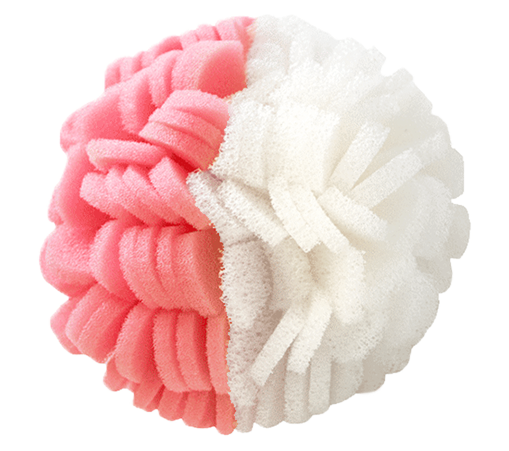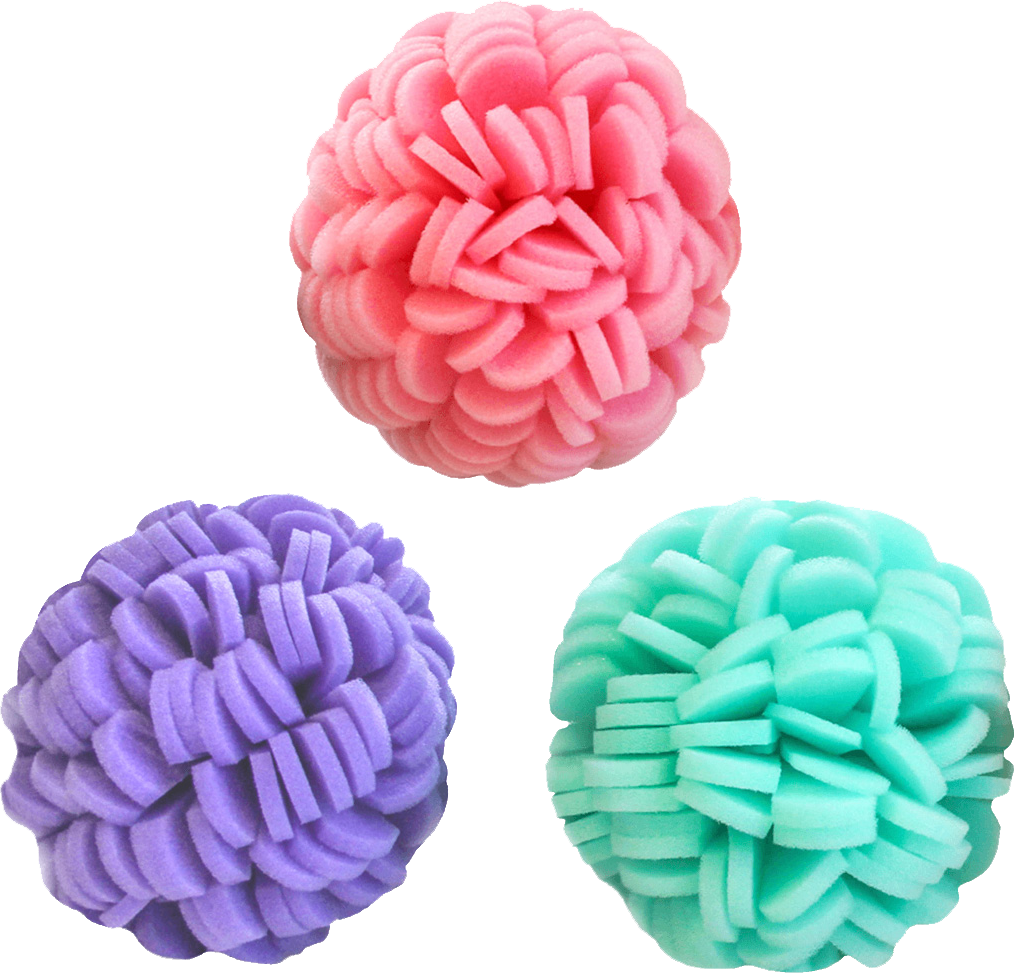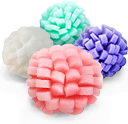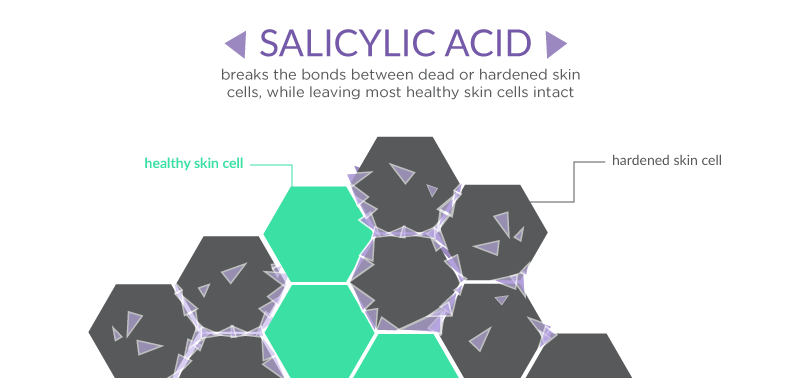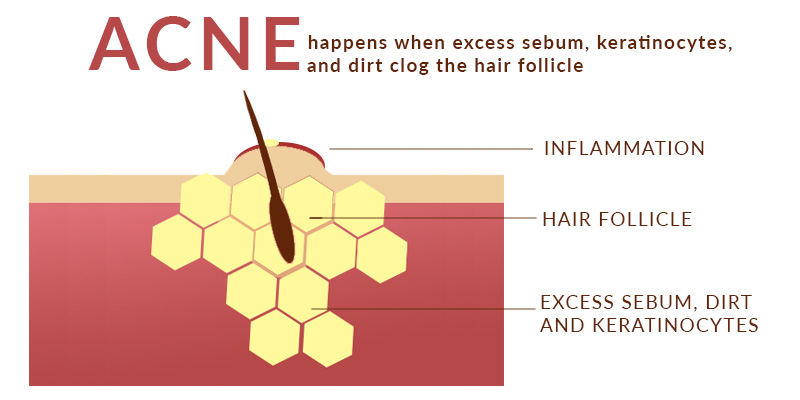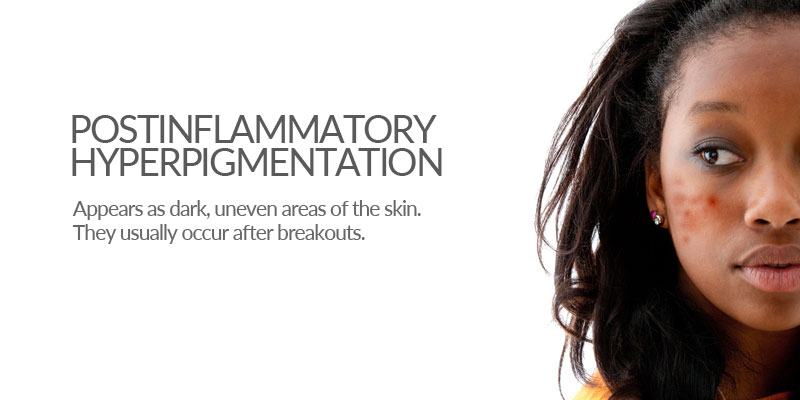One of our favorite ingredients is salicylic acid, a powerful keratolytic ingredient that can exfoliate even extremely dry, hardened skin. However, salicylic acid isn’t just limited to exfoliating your skin; in fact, recent research has shown that salicylic acid can treat a variety of conditions ranging from acne to postinflammatory hyperpigmentation. Today we wanted to briefly share some of the many reasons that we love salicylic acid, and why you should, too.
It Exfoliates Really, Really, Really Well
When it comes to exfoliation, it’s hard to beat salicylic acid. What makes salicylic acid so special is that it quickly detaches horny (hardened) stratum corneum cells without damaging one’s cellular wall (Archives of Dermatological Research), meaning that salicylic acid provides gentle yet thorough exfoliation. It is believed to exfoliate the skin by dissolving the intercellular “cement” that keeps skin cells close together, a trait that is of particular benefit when treating hardened and dried lesions. Specifically, in those with psoriatic lesions, salicylic acid was found to absorb into and remain within psoriatic skin longer than that of healthy skin (British Journal of Dermatology, Clinics in Dermatology). While psoriasis does not affect a large part of the human population, it is not unreasonable to believe that topically-applied salicylic acid would be of benefit in exfoliating dry skin lesions that are not psoriatic.
It Can Treat Breakouts
Unfortunately, there is no known cure for acne, nor are there any universal treatments that work for everyone. However, many individuals have seen significant improvements in breakouts when using salicylic acid. For example, patients using 0.5% and 2.0% salicylic acid pads saw significant improvements in the total number of primary lesions and severity of the lesions. Previous research also suggests that salicylic acid may be better than benzoyl peroxide (one of the most common acne treatments) when treating breakouts. Even better, evidence suggests that salicylic acid seldom induces adverse reactions in users, and even these reactions are typically limited or mild in severity (Clinical Therapeutics). A similar study from the journal Clinical Therapeutics compared the efficacy of a 2% salicylic acid and a 10% benzoyl peroxide acne cleanser. Those individuals who used only the salicylic acid cleanser saw significant decreases in the number of acne lesions. Those who initially used a benzoyl peroxide cleanser for two weeks saw continued improvement when they switched to using the salicylic acid cleanser for the next two weeks. Those who first used the salicylic acid cleanser then switched to benzoyl peroxide saw their condition worsen (Clinical Therapeutics). Research published in the Journal of Dermatological Treatment found that pads containing a 2% salicylic acid lotion led to significant improvements in cases of mild to moderate acne. While this certainly doesn’t mean that you should toss aside your benzoyl peroxide-containing treatments, you may want to speak with your dermatologist about using treatments containing salicylic acid.
It Can Lighten Postinflammatory Hyperpigmentation
For those who suffer from postinflammatory hyperpigmentation, topically-applied salicylic acid may lighten and brighten your skin. In a research study from the journal Dermatologic Surgery, patients with darker complexions and postinflammatory hyperpigmentation were given two 20% and three 30% salicylic acid peels. Although the patients rated these peels as being clinically effective, blind raters did not find the peels to be as effective in treating the condition. While there may not have been major improvements in post inflammatory hyperpigmentation, this research would seem to suggest that topically-applied salicylic acid peels hold great potential in treating the condition. Similarly, another study from the journal Dermatologic Surgery tested the efficacy of five salicylic acid peels (in concentrations of 20% and 30%) applied every two weeks to the skin of darker-complexioned individuals. The researchers found that the patients who suffered from conditions such as postinflammatory hyperpigmentation, melasma, acne, oily skin, and rough skin texture saw improvements in these ailments.
Bottom Line
It is difficult to say if there is a “best” skincare ingredient. However, salicylic acid is certainly one of the most worthwhile ingredients in contemporary dermatology, owing to its multiple functions and low likelihood for irritation. Research has shown that salicylic acid can exfoliate the skin and treat acne and postinflammatory hyperpigmentation, among other benefits. But do you know what else makes salicylic acid so great? It pairs beautifully with the ViaBuff Exfoliating Buffs!

